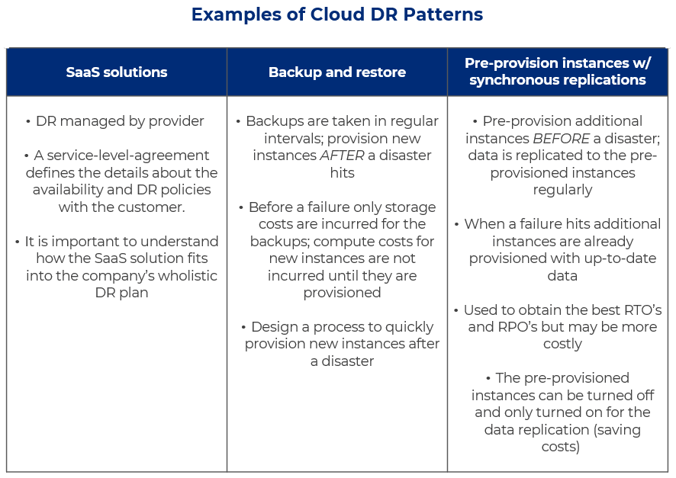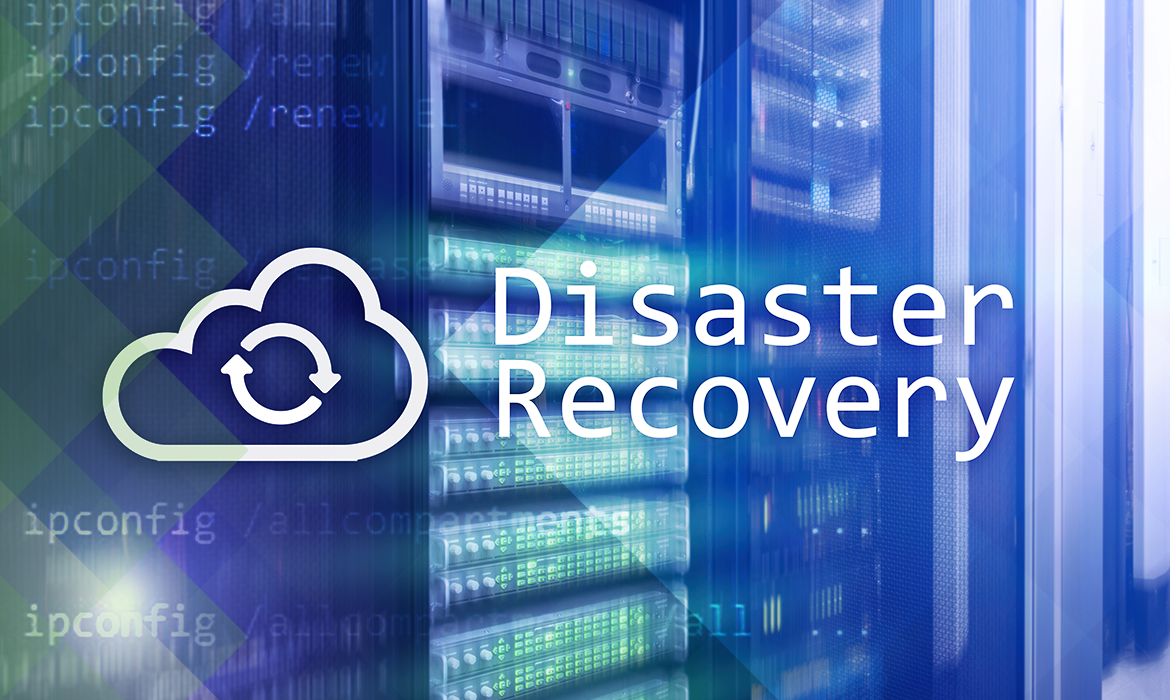In the last three years (2016–2019), there have been 51 weather- and climate-related disasters in the U.S., each exceeding $1 billion in losses (National Centers for Environmental Information, 2019). With this information at hand, it is imperative for companies to properly implement disaster recovery (DR) plans to be prepared for crisis situations that may include not only natural disasters but also technology failures and human error. With the rise of cloud technologies, companies in the energy industry are planning to transition from traditional disaster recovery strategies to cloud-based ones; however, the implementation of an effective cloud DR plan can be difficult. Teams can anticipate and minimize challenges during implementation by incorporating them into the upfront planning. This article discusses the top seven things to consider when planning for DR in the cloud.
1. Revisit the strategic priorities and goals in a DR scenario
An essential step when designing a DR plan in the cloud is to clarify the strategic priorities and goals for the company in a DR scenario. Is a strategic goal for the company to be able to do business when disaster hits? In order for this to be viable, critical commercial activities will need to continue to function and it is important to understand the systems that will be required to support those business activities. The business continuity plan should clearly define how the business will work in a DR scenario including location and functions.
Based on those priorities a DR plan can be architected to ensure system availability. Although many energy companies currently have a traditional DR plan through a secondary datacenter, the cloud offers more flexibility and agility, so it is important to reevaluate the DR plan as part of moving to the cloud.
2. Reassess applications and end-to-end processes
After the business continuity plan is established, the portfolio of applications should be assessed end-to-end. This assessment includes completing an impact analysis to understand which applications are the most critical, as well as the business impact radius for having critical applications down (how many processes will be impacted). In addition, the RTO (recovery time objectives) and RPO (recovery point objectives) targets should be set. These objectives can be set at a portfolio or application level and take into consideration the criticality of the portfolio/applications, the data/transaction loss tolerance between the last backup and the failure (RPO), and how much time can elapse between a failure and the recovery time (RTO). Setting application criticality, RTO, and RPO goals is essential to prevent over- or underspending on the DR cloud options.
For highly integrated portfolios, it is important to assess end-to-end processes and think about the dependent applications upstream and downstream. A good question to ask is, “Is there a state that would be problematic if an application is recovered, but is dependent on another application that is still down?” In these scenarios, understanding the sequence of the recovery of applications beforehand and testing the DR solution is imperative in order to avoid problematic states for dependent applications.
3. Choose a DR pattern that makes sense for your organization
Once strategic priorities are set and application portfolios are assessed, the organization can start considering the different DR solutions available in the cloud. As opposed to a traditional setting where the only DR solution was a secondary datacenter in which to failover, the cloud has multiple DR options; this means that an organization has the flexibility to choose what DR approach makes sense for the organization. Options for cloud DR solutions include deploying across multiple Availability Zones (composed of one or more datacenters) or multiple regions (composed of two or more Availability Zones). Other patterns include:

4. Develop effective DR management
It is important to develop and train the organization on the cloud DR plan. If a traditional datacenter-based DR strategy is already in place, some steps and policies will stay the same, but many other things will change. Due to the number of changes, training may often be underestimated, yet it is essential to ensure a solid plan is well prepared and executed. When teams are properly trained, the cloud should enable organizations to be more effective and make use of competitive advantages such as the ability to provision instances easily and quickly when a system fails. Equally as important is to plan for regular DR testing to ensure the proper execution of the DR plan.
5. Understand long-term licensing and support models
As many companies have third-party licenses for software it is important to review the vendor terms and conditions to understand long-term licensing models and impacts. It is essential for companies to take into consideration how many licenses will be required for additional instances that are provisioned and verify if the vendor contract specifies for special instances such as ‘reserved instances’ for certain licenses which might impact costs. For example, companies should understand that in multi-AZ scenarios, licenses will be required for the instance in each AZ. This might mean factoring in two license counts for software such as Microsoft Office or Oracle.
6. Apply cost to make final decisions
Ultimately, a good metaphor for a ‘DR strategy plan’ is insurance for the applications, data, and data files in case of a disaster situation. A critical question is: How much insurance is needed for a given portfolio and what is the price point that is reasonable for a given company? The advantage the cloud offers is the flexibility to choose across multiple solutions for what best fits the company. Step 2: Assessing applications and end-to-end processes, as stated above, will help factor in DR costs against the criticality and impact radius of the portfolio. See blog post Differences of Disaster Recovery in the Cloud vs. Traditional Datacenters regarding cloud cost analysis.
7. Review and update the DR plan regularly
The cloud has new technology releases frequently, so companies can take advantage of new technologies to improve their cloud DR plans. Even after implementing the cloud DR plan, companies should stay vigilant and update the DR plan accordingly and periodically.
In Summary
Implementing an effective DR plan for the cloud can feel like a large project. However, advanced planning and a methodical approach can produce right-sized solutions for any organization. While planning for cloud DR companies can position themselves for success by keeping in mind the top seven things to consider when designing a DR plan in the cloud: clarifying strategic priorities, assessing applications, choosing a DR pattern, effective DR management, understanding licensing, costs, and updating the DR plan.
At Veritas Total Solutions, we are experienced in cloud transformation. We offer a range of technology solutions across the business spectrum including disaster recovery cloud migration. If you are interested in learning more about our specific capabilities, contact us or subscribe to our blog to stay connected.

